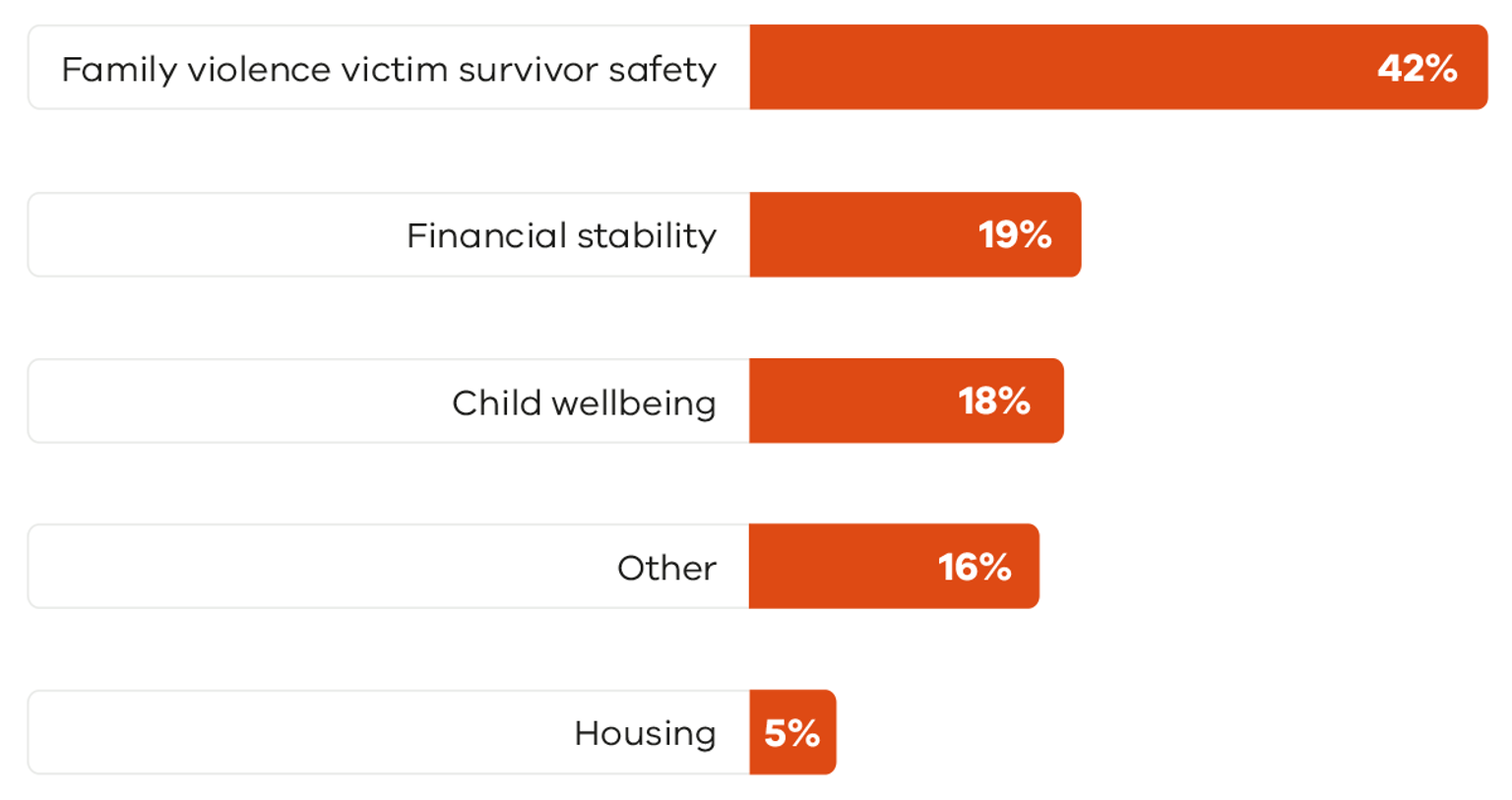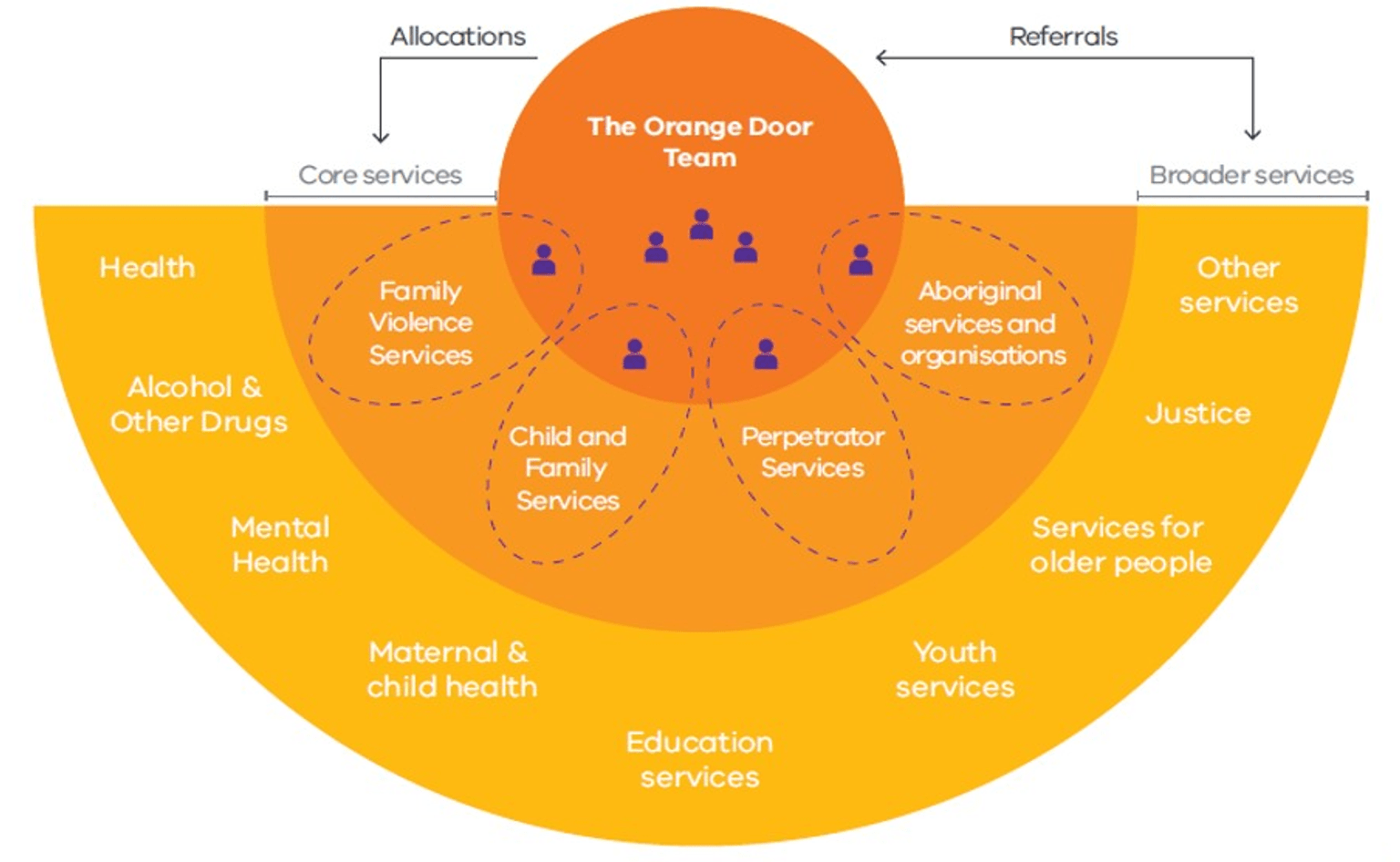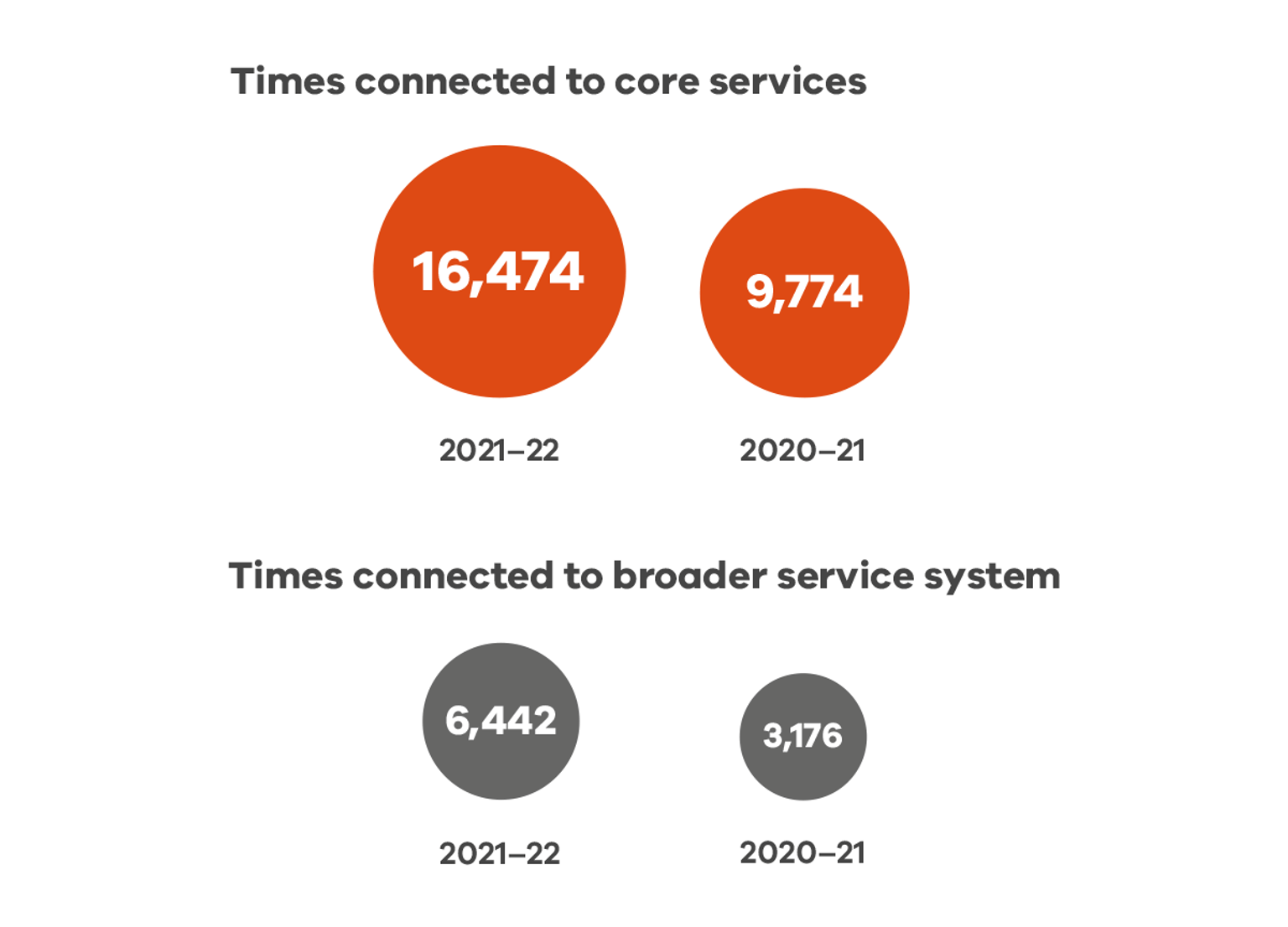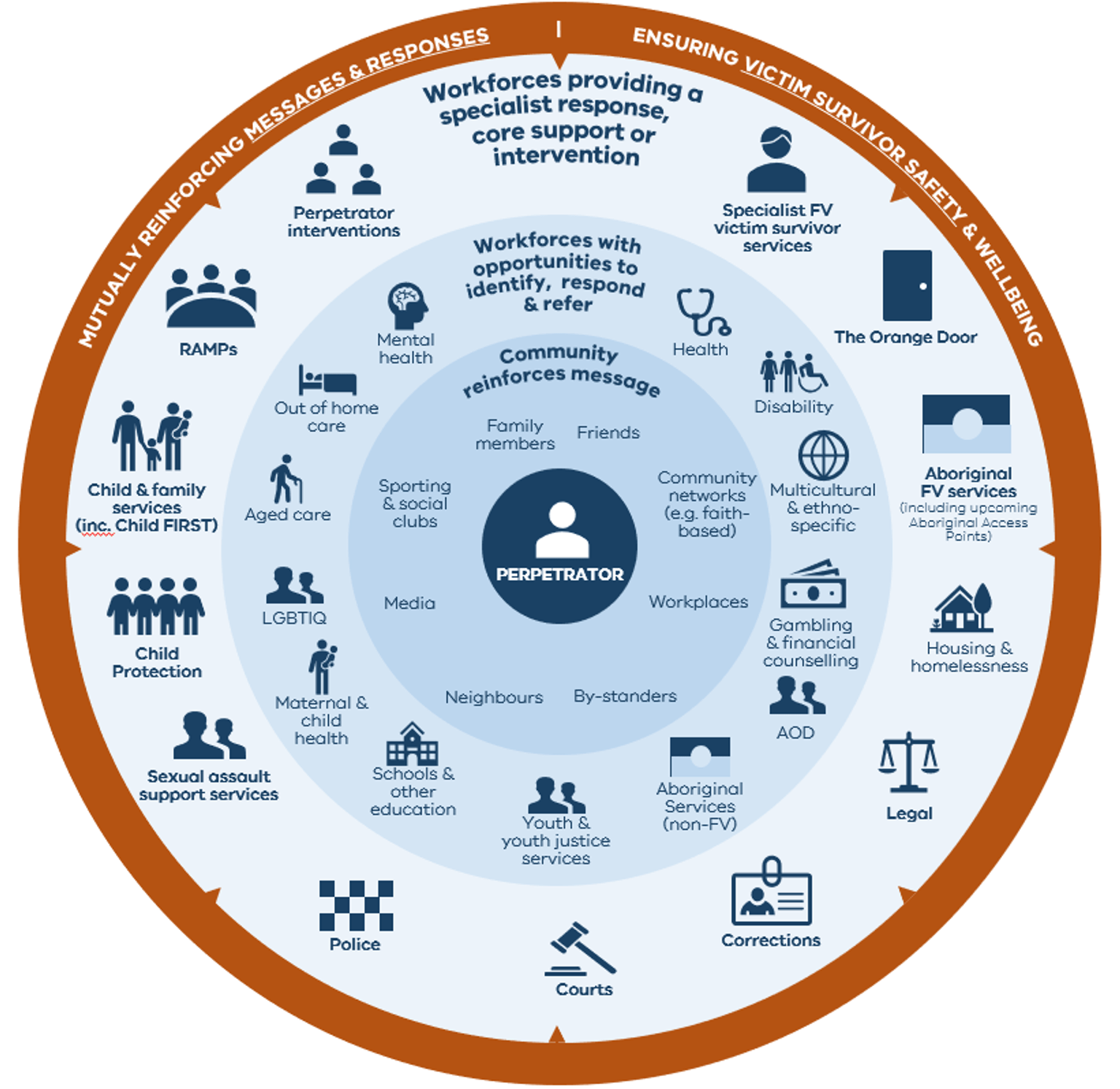What immediate supports does The Orange Door network provide?
The Orange Door network assesses risk and needs, manages risk (including through safety planning), responds to crisis and immediate needs, provides brokerage where needed and supports people to get the help they need by connecting them to relevant services for ongoing support.
The Orange Door network provides crisis intervention supported by brokerage funds. Brokerage funds are available to individuals and families accessing services through The Orange Door network, providing quick and flexible support to meet immediate needs and reduce risk.
In 2021-22, The Orange Door network provided more than 17,000 crisis responses and short-term interventions and nearly 23,000 connections to services. A breakdown of brokerage supports according to the needs identified shows that a reasonable share is devoted to family violence victim survivor safety (Figure 13).[21]
Brokerage is often utilised as it can be activated quickly and is flexible enough for the cost to meet the identified need. Accordingly, brokerage is critical to the provision of direct support to clients of The Orange Door network.
How is The Orange Door network working to connect people to services?
One of the key functions of The Orange Door network is to connect individuals and families to the services they need. The process of connecting an individual or family to a service is done either by ‘allocation’ to a core service (for example, when a client is provided with a family violence service, family service, perpetrator service or a service from an ACCO) or by a ‘referral’ to broader services when a client is supported to access any other service outside of the core services (for example, services such as housing or mental health support) (Figure 14).
In 2021-22, The Orange Door network allocated clients to a core service response 16,474 times representing a 68.5% increase from 2020-21 and connected people to broader services 6,442 times, representing a 102.8% increase from 2020-21 (Figure 15). In total, The Orange Door network made nearly 23,000 allocations and connections in 2021-22, representing a 77.0% increase compared 2020-21. Again, this increase is largely due to the commencement of new The Orange Door areas.
The Service System Navigator for each area plays an important role in establishing and maintaining local connections and ensuring strong referral pathways for clients. This work includes strengthening access and responsiveness to diverse communities. In April 2021, legislation was amended to prescribe a wider range of professionals and sectors, primarily across education and health services, to align to the MARAM Framework. This is enhancing collaboration and improving the identification of risk and responses to people experiencing family violence by The Orange Door network.
Perpetrator accountability and the role of The Orange Door network
In 2021-22, over 35,000 cases were recorded with a client role of perpetrator, representing 21.5% of all cases across The Orange Door network. The family violence service system is progressively increasing its focus on perpetrator accountability and responses to perpetrators are expanding. New perpetrator initiatives have been introduced, including accommodation-based support for perpetrators which aims to keep victim-survivors safe in their own homes.
The Victorian Government’s Family Violence Rolling Action Plan 2020-23 includes a priority focus on perpetrators and articulates a whole-of-Victorian Government work program to strengthen perpetrator accountability.[22] This work is led by and builds on the vision of a strong ‘web of accountability’ articulated by the Royal Commission into Family Violence and the Expert Advisory Committee on Perpetrator Interventions (Figure 16). The web includes the people, groups, services, and systems that must work together to form a cohesive system to engage with and influence a perpetrator’s behaviour to achieve perpetrator accountability.
The Orange Door network, enabled by CIP, MARAM and FVISS/CISS, plays a critical role in assessing and responding to adults using family violence. In February 2022, the perpetrator-focused Comprehensive MARAM Practice Guides and tools were released to The Orange Door network.
In addition, further development and rollout of the perpetrator focussed Tools for Risk Assessment and Management (TRAM) tools will occur over the course of 2023. FSV, in collaboration with Practice Leadership, have been developing the statewide operational guidance for The Orange Door response to perpetrators. The focus of the operational guidance is the role of The Orange Door in engaging with perpetrators as well as assessing and managing the risk they pose. Across the network, each site is developing local implementation plans to support the change management approach for MARAM alignment to the comprehensive tools.
Notes
[21] Note that needs identified with small proportions such as Disability, Justice, Alcohol and Drugs have been grouped into ‘other.'
[22] Family Violence Reform Rolling Action Plan 2020-2023 webpage, State Government of Victoria, accessed 14 October 2022.
Updated



